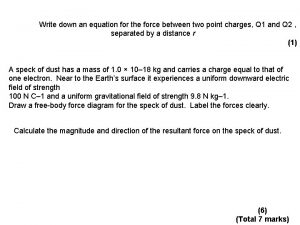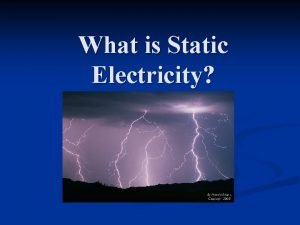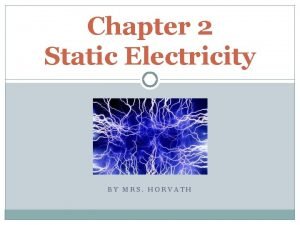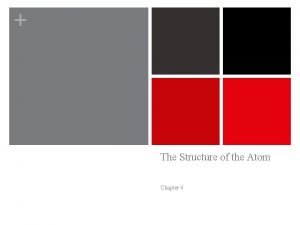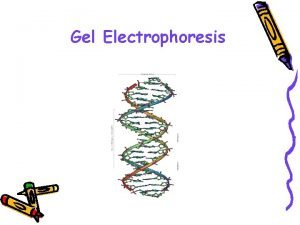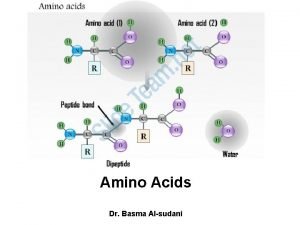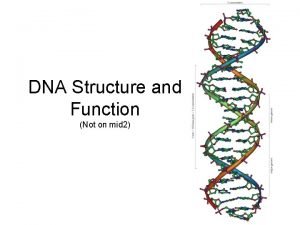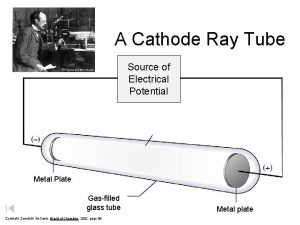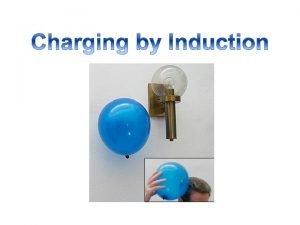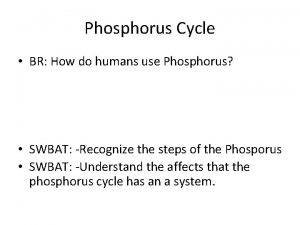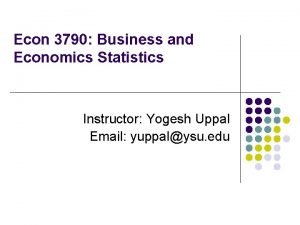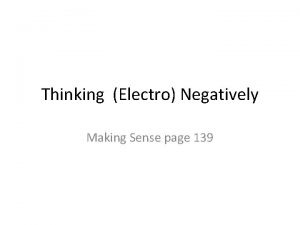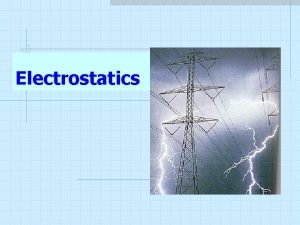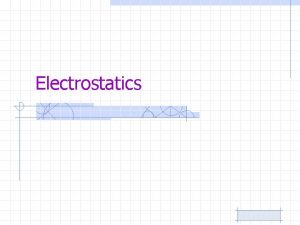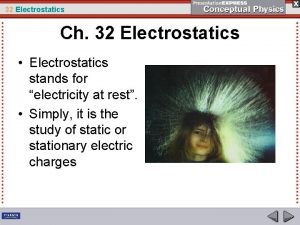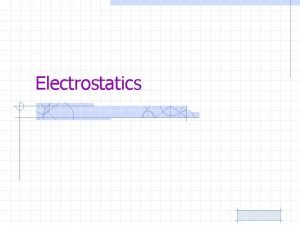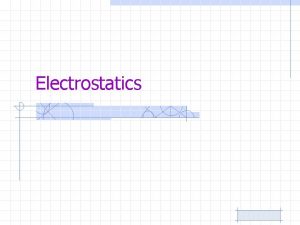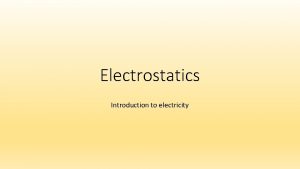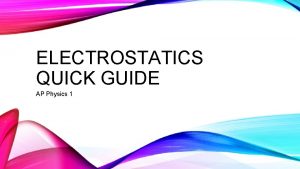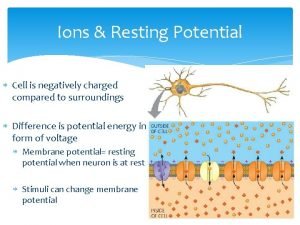ELECTROSTATICS Electrostatics J J Thomson discovered negatively charged












- Slides: 12

ELECTROSTATICS Electrostatics

• J. J. Thomson – discovered negatively charged particles which he called electrons History • Ernest Rutherford – discovered that the nucleus is positively charged.

Charges • Protons have positive electric charge • electrons have negative electric charge • Atoms become charged by gaining or losing electrons

Charged objects • Have an uneven number of protons and electrons

Electrostatic s of • the study electrical charges that can be collected and held in one place

Electrical Laws • Law of conservation of charge – charge may be transferred from object to another object, but it cannot be created or destroyed

Electrical Laws • Opposite charges attract, and like charges repel • Charges can act on each other even at a distance

• Electrons move more easily through conductors, like metals. • Electrons do not move easily through insulators, such as plastic, wood, rubber, and glass

Transferring electric charge • Charging by contact (conduction) – the process of transferring charge by touching or rubbing – Example: static electricity from your feet rubbing the carpet

Transferring electric charge • Charging by induction: – The rearrangement of electrons on a neutral object caused by a nearby charged object – Example: a negatively charged balloon near your sleeve causes an area of your sleeve to become positively charged

Static Discharge • A transfer of charge through the air between two objects because of a build up of static electricity • Example: lightning

Electroscopes detect charges • When a negatively charged object touches the electroscope, the leaves become negatively charged and repel each other.
 The diagram shows a negatively charged oil drop
The diagram shows a negatively charged oil drop Is cotton negatively charged
Is cotton negatively charged Is cotton negatively charged
Is cotton negatively charged Radiation deflected toward the negatively charged plate
Radiation deflected toward the negatively charged plate Why dna is negatively charged
Why dna is negatively charged Are amino acids negatively charged
Are amino acids negatively charged Functions of nucleotides
Functions of nucleotides Is cathode negatively charged
Is cathode negatively charged Charging by induction permanent
Charging by induction permanent How do humans negatively affect the phosphorus cycle
How do humans negatively affect the phosphorus cycle Negatively skewed
Negatively skewed Affirmative negative words spanish
Affirmative negative words spanish Electronegativity
Electronegativity
